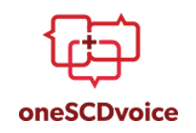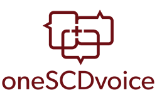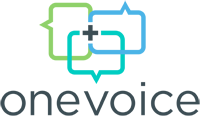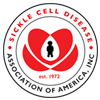Trusted Resources: Evidence & Education
Scientific literature and patient education texts
Health literacy in adolescents with sickle cell disease
source: American Society of Pediatric Hematology/Oncology
year: 2016
authors: Elizabeth L. Perry, Patricia Carter, Heather Becker, Alexandra Garcia, Michael Mackert, Karen Johnson, George R. Buchanan
summary/abstract:Health literacy is defined as “the degree to which individuals have the capacity to obtain, process, and understand basic health information and services needed to make appropriate health decisions”. There is a paucity of literature regarding health literacy in adolescents and specifically no published data describing the state of health literacy in adolescents with sickle cell disease (SCD).
Design/Method: This cross-sectional, descriptive correlational study included assessment of demographic measures and evaluation of data resulting from completion of the REALM-Teen and Newest Vital Sign (NVS) instruments by 75 Black, non-Hispanic adolescents with SCD followed at Children’s Medical Center (CMC) in Dallas, Texas. Convenience sampling was utilized. Inclusion criteria were a diagnosis of one of the four primary genotypes of SCD and age 10-19 years. UT Austin and UT Southwestern Institutional Review Boards approved the study.
Results: Thirty-seven males and 38 females were recruited for the study. Their mean age was 14.7 years (SD=2.2; range 8.1). Their grade level ranged from 4 to 12 (mean 8.7; SD=2.2). The following SCD genotypes were represented: SS (81.3%); SC (14.7%); Sβ+ (2.7%) and Sβ0 (1.3%). Scores on the REALM-Teen ranged from 12 to 66 (mean 53.7; SD=12.8). Scores on the NVS ranged from 0 to 6 (mean 2.37; SD=1.33). These health literacy scores were lower using both the REALM-Teen and the NVS instruments when compared to scores in healthy adolescent and adult controls. However, the mean REALM-Teen score of this sample was slightly higher than Black controls from the validation study. Current grade level and health literacy scores showed a moderately high positive correlation (r =.52, p < .01). Health literacy scores were also significantly positively correlated with age (r =.49, p < .01) and income (r =.37, p < .01).
read moreRelated Content
-
The Truth About Chronic Illness in CollegeAs I write this post I am sitting in my ...
-
Living With Sickle Cell DiseaseIf you or your child has sickle cell dis...
-
Beverly Ndukwu: A Patient Fighting Back With SCDBeverly Ndukwu was diagnosed with sickle...
-
Conversation With Women in the Sickle Cell CommunitySickle Cell Project of NW Ohio at Neighb...
-
Surprise of a lifetime: Devin McCourty gives away two Super Bowl LIII ticketsBrunel Etienne says one his childhood dr...
-
I have Sickle Cell Anaemiahttps://www.youtube.com/watch?v=3JNr8c5p...
-
Is Caregiver Education About Sickle Cell Trait Effective?Despite universal newborn screening that...
To improve your experience on this site, we use cookies. This includes cookies essential for the basic functioning of our website, cookies for analytics purposes, and cookies enabling us to personalize site content. By clicking on 'Accept' or any content on this site, you agree that cookies can be placed. You may adjust your browser's cookie settings to suit your preferences. More Information
The cookie settings on this website are set to "allow cookies" to give you the best browsing experience possible. If you continue to use this website without changing your cookie settings or you click "Accept" below then you are consenting to this.




 +myBinder
+myBinder
